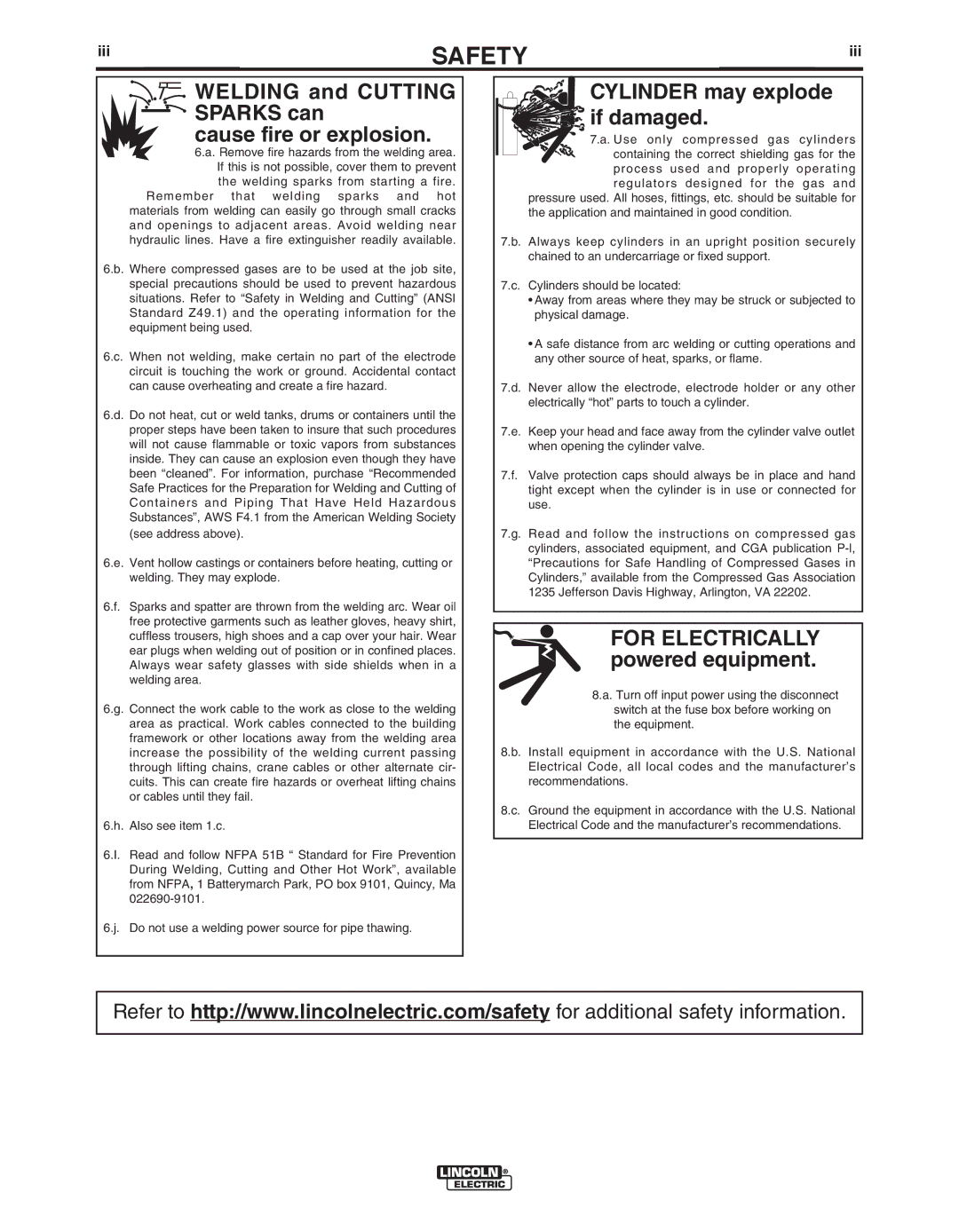IM10056 specifications
The Lincoln Electric IM10056 is a versatile and powerful electric welder designed for professionals and DIY enthusiasts alike. Known for its robust construction and user-friendly features, the IM10056 stands out in the welding equipment market. This welder is ideal for a variety of applications, including fabrication, repair, and maintenance tasks, making it a popular choice for both commercial and home workshops.One of the key features of the Lincoln Electric IM10056 is its impressive power output. The machine is equipped with a high-performance inverter technology that provides a stable arc, allowing for smooth and consistent welds even on thin materials. This inverter technology also contributes to energy efficiency, reducing operational costs while maintaining high performance standards.
The IM10056 offers a wide range of welding capabilities, supporting different processes such as MIG, TIG, and stick welding. This multi-process functionality allows users to switch between welding techniques easily, making it an incredibly adaptable machine for various projects. The intuitive controls and digital display simplify the setup process, enabling welders to quickly adjust settings for optimal performance.
Another notable characteristic of the Lincoln Electric IM10056 is its portability. Weighing in at a manageable level, this welder can be easily transported to job sites or stored away when not in use. Its compact design does not compromise functionality; it still delivers robust performance in tight spaces.
Safety features are also a primary consideration in the design of the IM10056. The welder includes an integrated cooling system to prevent overheating, which enhances durability and extends the machine’s lifespan. Additionally, it comes with protection against overload, ensuring that users can operate the device confidently without the risk of damage.
Moreover, maintenance is made easy with the Lincoln Electric IM10056. Regular service requirements are minimized due to its reliable construction and technological advancements, making it an ideal choice for users who want a durable and long-lasting tool.
In summary, the Lincoln Electric IM10056 is a well-rounded, feature-rich welding machine that combines power, efficiency, and versatility. With its advanced technologies, multi-process capabilities, user-friendly interface, and safety features, it is a leading choice for anyone looking to tackle their welding projects with precision and confidence. Whether for professional or personal use, the IM10056 delivers exceptional performance that meets the demands of modern welding applications.

